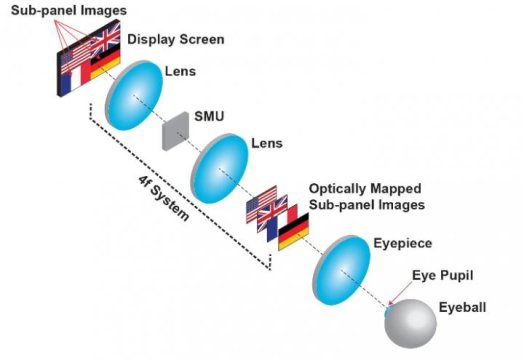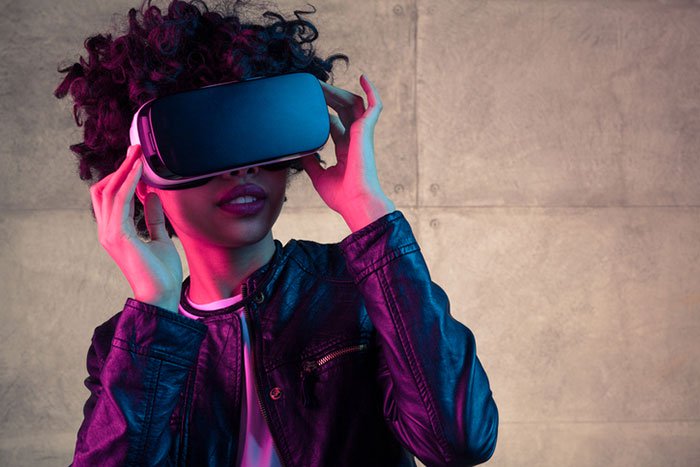
New 3-D display takes the eye fatigue out of virtual reality
New 3-D display takes the eye fatigue out of virtual reality https://csuiteold.c-suitenetwork.com/wp-content/uploads/2017/06/new-3-d-display-takes-the-eye-fatigue-out-of-virtual-reality.jpg 524 360 C-Suite Network https://csuiteold.c-suitenetwork.com/wp-content/uploads/2017/06/new-3-d-display-takes-the-eye-fatigue-out-of-virtual-reality.jpg
The new display creates a 3-D image using optical mapping. An OLED screen is divided into four subpanels that each create a 2-D picture. The spatial multiplexing unit (SMU) shifted each of these images to different depths while aligning the centers of all the images with the viewing axis. Through the eyepiece, each image appears to be at different depth.

There is a great deal of excitement around virtual reality (VR) headsets that display a computer-simulated world and augmented reality (AR) glasses that overlay computer-generated elements with the real world. Although AR and VR devices are starting to hit the market, they remain mostly a novelty because eye fatigue makes them uncomfortable to use for extended periods. A new type of 3D display could solve this long-standing problem by greatly improving the viewing comfort of these wearable devices.
“We want to replace currently used AR and VR optical display modules with our 3D display to get rid of eye fatigue problems,” said Liang Gao, from the University of Illinois at Urbana-Champaign. “Our method could lead to a new generation of 3D displays that can be integrated into any type of AR glasses or VR headset.”
Gao and Wei Cui report their new optical mapping 3D display in The Optical Society (OSA) journal Optics Letters. Measuring only 1 x 2 inches, the new display module increases viewing comfort by producing depth cues that are perceived in much the same way we see depth in the real-world.
Overcoming eye fatigue
Today’s VR headsets and AR glasses present two 2D images in a way that cues the viewer’s brain to combine the images into the impression of a 3D scene. This type of stereoscopic display causes what is known as a vergence-accommodation conflict, which over time makes it harder for the viewer to fuse the images and causes discomfort and eye fatigue.
The new display presents actual 3D images using an approach called optical mapping. This is done by dividing a digital display into subpanels that each create a 2D picture. The subpanel images are shifted to different depths while the centers of all the images are aligned with one…






